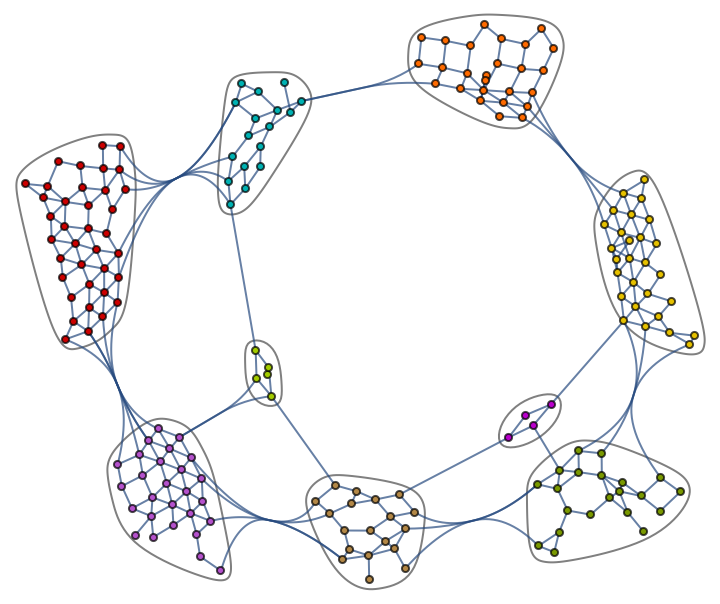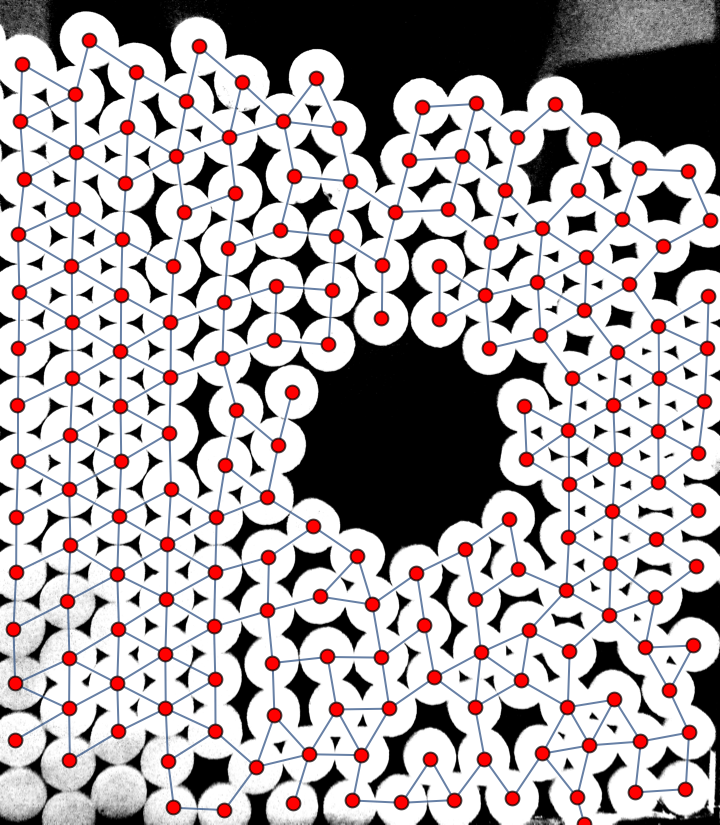(* Perform image manipulation steps, feeding from one to another. *)
(* You can replace a "//" with "// Echo //" to see an intermediate value. *)
MorphologicalBinarize[img, 0.9] // Blur[#, 40] & //
Binarize[#, 0.9] & // HitMissTransform[#, DiskMatrix[55]] & //
(* Measure component centroids on the manipulated image. *)
ComponentMeasurements[#, "Centroid"][[All, 2]] & //
Function[v,
(* Select valid edges from all pairs of components:
- those whose edge length is less than 300, and
- at most 4 values of 400 sampled along the edge have a value < 0.25 *)
Select[Subsets[v, {2}],
EuclideanDistance @@ # < 300 && Count[
Table[
Min@PixelValue[imgCount[Table[Min@PixelValue[img, {t, 1 - t}.#], {t, 0, 1, 0.0025}],
0.0025}], _?(# < 0.25 &)] < 5 &] //
(* Overlay the graph on top of the original image. *)
Show[img,
(* Construct a graph object with vertices on component centroids,
and edges as filtered by the Select expression. *)
Graph[v, UndirectedEdge @@@ #, VertexCoordinates -> v,
VertexStyle -> Red, VertexSize -> 1/2], ImageSize -> Medium] &]
g = (MorphologicalBinarize[img, 0.9] // Blur[#, 40] & //
Binarize[#, 0.9] & // HitMissTransform[#, DiskMatrix[55]] & //
ComponentMeasurements[#, "Centroid"][[All, 2]] & //
Function[v,
Select[Subsets[v, {2}],
EuclideanDistance @@ # < 300 &&
Count[Table[
Min@PixelValue[imgCount[Table[Min@PixelValue[img, {t, 1 - t}.#], {t, 0, 1, 0.0025}],
0.0025}], _?(# < 0.25 &)] < 5 &] //
Graph[v, UndirectedEdge @@@ #, VertexCoordinates -> v] &])


